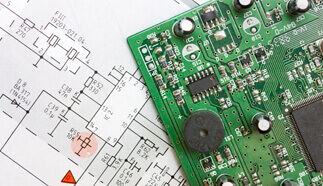SCS Blog
Recent SCS Blogs
All About Conformal Coatings
Conformal coatings insulate printed circuit boards (PCBs) and similar electronics; their protection increases devices’ tolerance to harsh environments. The result is undisturbed functionality through a range of frequently harsh operating environments and performance conditions. Conformal coatings are used to protect applications in the aerospace/defense, automotive, consumer and medical device industries. There are five basic types... Read More >>
Silicone vs. Urethane Conformal Coating
Silicone and urethane stand out as prevalent conformal coating types due to their protective attributes. The superiority between the two coatings hinges on your specific application. Below is an exploration of the advantages and disadvantages of each type. Silicone Conformal Coating Benefits Most common silicone coatings have continuous operating temperature ratings of 200ºC. This is... Read More >>
Conformal Coating vs. Potting
There are two common methods for circuit board protection, conformal coating and potting. Depending on the project, the use of one of these two options typically provides sufficient protection to a circuit board. What is Conformal Coating? Conformal coating is a protective, nonconductive dielectric layer that is applied onto the printed circuit board assembly to protect... Read More >>
The Conformal Coating Removal Process
Removing unwanted conformal coating from a PCB can range from a straightforward task to a challenging undertaking. The ease or difficulty of the process is dictated by the type of coating that needs removal, its location on the board and the components present. Identify the coating to be removed from the assembly first. Once determined,... Read More >>
Why use a Conformal Coating Drying Cabinet?
Various pieces of conformal coating equipment serve distinct functions, with drying cabinets being no exception. Drying cabinets play a crucial role in the process, extracting air from around assemblies, securing them in place during curing, and shielding them from potential damage. Drying cabinets are mainly used to extract air from around the assemblies to aid... Read More >>
Conformal Coating Quality Standards
Conformal coatings vary in their material-specific properties when used as protective films for electronic assemblies. Understanding the operational traits of different coating types and their interaction with assembly components is crucial for effective film application. Challenges in selecting and applying conformal coatings stem from possible post-application issues such as: Stringent professional standards and specifications are... Read More >>
In-Line Parylene Processing?
The phrase “in-line Parylene processing” is deceptive because it does not accurately describe the method in which Parylene (XY) is applied as a conformal coating. Some aspects of the traditional production line are relevant but without station-to-station regimentation of standard in-line manufacturing processes. A conventional factory production line incorporates a structure wherein the object being... Read More >>
Why Use an Automated Conformal Coating Spray Robot
A typical conformal coating selective robotic spray process consists of a programmable XYZ coordinate platform with a valve or valves attached to a controllable arm, depositing coating onto a printed circuit board in areas specified by the system programming. Technology varies between different platforms and valves, but essentially, they achieve the same result. The goal... Read More >>
Nanocoating vs Parylene
Although its basic component is remarkably small–-25,400,000 nanometers per inch–nanotechnology encompasses a growing, interdisciplinary field with an unlimited future. Nanowires and nanotubes are used in transistors for printed circuit boards (PCBs) and associated electronic assemblies. Bio-nano batteries, capacitors, LCDs and microprocessors represent just a few nanotechnology applications. Uses of Nanocoatings Conformal coatings protect electronic components... Read More >>
Conformal Coating for PCBs
Printed circuit boards (PCBs) electrically connect and power even the simplest electronic products. To function as designed, PCBs and their components – capacitors, resistors, etc. – require protection against operating problems caused by corrosive liquids, dust, physical shock and temperature extremes as well as the bodily fluids medical implants must endure. Conformal coatings are applied... Read More >>


